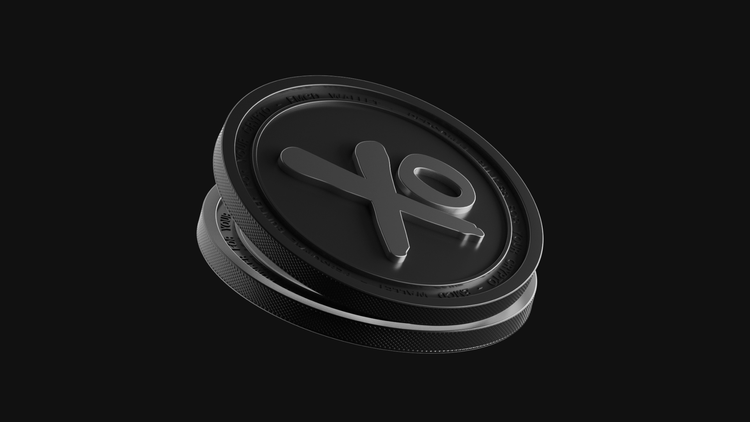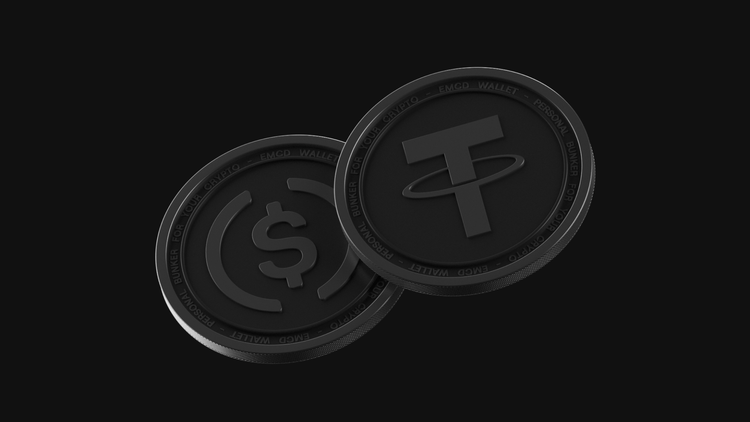From Zero to Profit: How Much You Can Make with Crypto Mining

Mining is one of the most well-known ways to earn crypto. But just how much money can you actually make mining crypto, and how soon can you expect to see a return?
There’s no simple answer. Crypto markets are volatile, and mining income can vary from day to day. Still, it’s possible to make a rough estimate based on a few key factors.
Your profits will depend on more than just the current price of Bitcoin or other coins. The hardware type you use, the cryptocurrency you choose to mine, and even your electricity costs all play a major role in determining your profits.
Mining can be a smart move if you understand what goes into it.
Let’s find out how much you can make from crypto mining and figure out if it’s worth it for you.
What’s Cryptocurrency Mining?
Before figuring out how much you can make mining cryptocurrency, you need to understand the fundamentals — what mining actually is and how this process works.
Mining is how new cryptocurrency coins enter circulation and how transactions on the blockchain get verified. It’s a process that keeps crypto networks running smoothly, securely, and without middlemen.
In simple terms, mining is solving complex mathematical puzzles using powerful hardware. When your machine finds the right solution, you earn a reward in crypto. That’s your payout for helping maintain the network.
Today, mining isn’t just about Bitcoin. Many cryptocurrencies can be mined, each with its own rules, rewards, and technical requirements.
Here’s what crypto mining is really about:
- Problem solving. Your device competes to crack a code
- Hardware power. The more powerful your hardware, the better your earning potential
- Block rewards. You get paid in crypto for every block you help process
While many focus solely on how much they can make with crypto mining, smart miners know that true profitability begins with understanding the mining process itself.

Mining for Profits: How Do Crypto Miners Really Make Money?
Crypto mining is all about earning rewards. But where does that money actually come from, and how does it end up in your wallet? Let’s find this out by diving into the mining process.
Miners primarily make money by creating new blocks and receiving block rewards, with transaction fees acting as an additional income. This reward usually includes:
- Block rewards. It’s a fixed number of coins given for validating a block
- Transaction fees. Users pay small fees to move crypto, and those fees go to miners who include their transactions in blocks
If you’re eager to find out how much money you can really make mining crypto, you should know that these hidden factors make all the difference between pocketing profits or losing your investment:
- Hashrate. The more computing power you contribute, the better your chances of earning a reward
- Mining difficulty. As more miners join the network, competition increases, and solving blocks gets harder
- Pool or solo mining. Going solo can mean bigger payouts, but it’s much riskier. Most miners join pools, combining power to earn smaller, but more frequent, rewards
- Crypto prices. When the market is strong, even small rewards can add up fast. When prices drop, profits shrink
In short, miners make money by doing the hard work behind the scenes, keeping the network running, and earning crypto in return. But like any business, your bottom line will depend on how efficiently you operate and the conditions you're mining under.
Key Factors That Can Make or Break Your Profits
Before wondering how much money you can make with crypto mining, you need to know that mining profitability isn’t just about how powerful your hardware is or how well you understand the blockchain. In fact, even the most advanced setup can struggle to turn a profit if a few key external factors aren’t in your favor.
Let’s take a closer look at the main things that influence how much money you can realistically make from crypto mining, regardless of your experience level or hardware, outlined in this guide.
Cryptocurrency Price Volatility
This is one of the biggest factors and the hardest to predict. Mining rewards are paid in tokens, not in fiat. So when the market swings, your earnings can jump or crash overnight.
Even relatively stable coins like Bitcoin (BTC) and Ethereum (ETH) can experience major price shifts in short periods. For smaller or newer coins, the volatility can be even more extreme. A mining setup that was profitable one week could start bleeding money the next, depending on the market.
Network Difficulty
Mining is powered by the Proof-of-Work consensus mechanism, which automatically adjusts how difficult it is to mine new blocks. This keeps coin issuance stable, but also affects your profits.
As more miners join the network and the hashrate increases, the algorithm ramps up the difficulty. That means your rig has to work harder and use more energy to earn the same amount of crypto. When competition slows down, the network eases up, and your profits can rise.
This balancing act is crucial to maintaining the health of the blockchain, but it directly impacts your bottom line.
Electricity Costs
Electricity is one of the few costs in mining that are ongoing and unavoidable. The more efficient your hardware, the better. However, even top-tier machines won’t be profitable if your energy bills are sky-high.
That’s why many miners set up operations in regions with cheap electricity. In some cases, simply relocating your mining farm can drastically change your profit margins.
The less you spend powering your farm, the faster your equipment pays for itself and the sooner you start seeing real profits.
Mining Pool Fees
You're probably joining a mining pool unless you’re solo mining, which is rare. This group of miners combines computing power to increase the odds of earning rewards. In return, the pool takes a small fee from each payout.
It might seem minor, but pool fees can eat into your profits over time. That’s why it’s worth comparing different pool options and choosing one that offers fair fees, reliable payouts, and solid performance. For example, EMCD Mining Pool is known for its competitive fee structure, daily payouts, and user-friendly interface, making it a solid choice for both beginners and experienced miners looking to maximize returns.
Hardware Performance
The one factor that’s entirely in your control is your mining rig:
The better your equipment, the more hashrate you contribute, and the more rewards you can potentially earn.
Take a closer look at the ways to increase your mining performance:
- Expanding your farm by adding more GPUs or ASICs
- Replacing outdated hardware with newer, more efficient models
- Overclocking your graphics cards to squeeze out extra power
Experienced miners treat their rigs like high-performance machines — tuning, upgrading, and optimizing to get the best possible output with the lowest cost.
Mining profitability is a moving target shaped by both global market trends and individual decisions. You can’t control crypto prices or difficulty changes, but by managing your setup wisely and staying on top of costs, you give yourself the best shot at staying in the green.
How to Calculate Mining Profits
It's smart to run the numbers before plugging in your rig and watching the hashrates climb. After all, the big question on every beginner’s mind is, how much money can you make mining cryptocurrency, and is it even worth it?
The answer starts with a simple formula:
(Daily Earnings) – (Electricity Costs + Pool Fees + Maintenance) = Your Net Profit

You’ll also want to factor in your hardware investment and how long it will take to break even. This is known as your ROI, or return on investment, a key metric in determining whether your setup will pay off or drain your wallet.
Luckily, you don’t have to do all the math manually. Tools like mining profit calculators let you input your GPU or ASIC model, electricity rate, and the coin you choose to estimate daily and monthly profits in just a few clicks.
Just take a few minutes to crunch the numbers before you commit. It’s the easiest way to avoid surprises and start mining with your eyes wide open.
Realistic Earnings Examples and Case Studies
So, what do crypto mining profits look like in the real world? Let’s skip the hype and take a grounded look at what miners are actually earning today. How much money can you realistically make mining crypto in 2025?
Let’s take a solo miner with the following setup:
- 1x Bitmain Antminer S21 Pro
- Mining Bitcoin (BTC)
- Hashrate: 234 TH/s
- Power consumption: 3510 W
- Electricity rate: $0.10/kWh
- Daily net profit: ~$3.43
- Hardware cost: ~$3 500
- Estimated ROI time: ~34 months
These figures are based on current market conditions (as of April 2025), including a BTC price of around $95K and network difficulty of 123T. Profitability can change significantly with shifts in Bitcoin’s price, network difficulty, and electricity costs.
Pro Tip: Seasoned miners often boost their profits by joining efficient pools like EMCD, optimizing overclock and undervolt settings, and strategically switching to mine altcoins with lower difficulty during network dips.
While no setup can guarantee instant success, this approach offers a realistic perspective on what’s achievable when mining is treated as a calculated, strategic process. Whether you’re running a single ASIC or managing a small farm, consistent tuning and smart decision-making are the keys to sustainable profitability.

Hidden Costs and Mining Risks
Mining might seem like a money-making machine, but beneath the surface, there are hidden costs and risks that can quickly eat into your profits. Let’s take a closer look at some of these sneaky expenses and potential pitfalls you need to consider before diving in.
Electricity Costs
You may calculate your power needs, but electricity costs can change unexpectedly. In some regions, rates can increase unexpectedly, especially during peak seasons or high-demand periods. Keep an eye on local utility changes to avoid unpleasant surprises.
Hardware Maintenance and Wear
Mining puts significant strain on your hardware. Over time, GPUs and ASICs can wear down, especially if you're overclocking or running your rig 24/7. Repairs, replacements, and cooling solutions can quickly add up. Don’t forget about warranties that may be voided by intensive use.
Pool Fees
While mining pools help improve your odds, the fees they charge can chip away at your profits. Some pools also have withdrawal fees, which can be another factor to watch out for if you’re trying to cash out regularly.
Network Instability
Crypto markets and blockchain networks are notoriously volatile. While you might have steady profits one month, the next could bring a drastic drop in coin value or mining difficulty. Network adjustments like difficulty spikes can affect how much you're able to mine.
Regulatory Risks
Crypto mining laws vary by region, and some governments are cracking down on mining operations due to high energy consumption or environmental concerns. Always stay updated on local regulations to ensure your mining operation stays legal.
Mining can be profitable, but these hidden costs and risks are important to factor in. The more prepared you are, the easier it’ll be to navigate the mining world's ups and downs.
Can You Make Passive Income with Crypto Mining?
The dream of passive income is a powerful motivator for many new miners. The idea is simple: set up your mining rig and watch the rewards roll in without lifting a finger. But how realistic is this dream?
In theory, crypto mining can generate passive income as long as you have the right equipment, the right setup, and low enough energy costs. Although mining rigs can operate automatically, regular monitoring, maintenance, and adjustments are necessary to ensure profitability and prevent hardware failure.
To maximize your chances of earning passive income, choosing the right cryptocurrency to mine, optimizing your hardware, and staying updated on the market trends are your keys. While generating passive income is possible, it’s not entirely hands-off. You’ll need to monitor performance, adjust for changing conditions, and reinvest in your equipment to stay profitable.
In short, while mining can be a passive income stream, it’s not entirely ‘set and forget,’ but with the right approach, it can be a rewarding one.
Future Outlook: Will Mining Stay Profitable?
As the crypto landscape shifts, the big question is how much money you can make mining crypto in the future. With rising mining difficulty, fluctuating coin prices, and the increasing impact of government regulations on mining operations, the future of profitability isn’t as clear-cut. Some regions tighten rules, while others encourage mining growth, creating a patchwork of opportunities and challenges. However, for miners who adapt — optimize hardware, choose promising altcoins, and keep an eye on regulation changes — crypto mining can still remain profitable. The key is staying flexible, informed, and ready to pivot as the market evolves.
FAQ
How much can a beginner make with crypto mining?
A beginner can make around $20-$100 per month with a basic setup, depending on hardware, electricity costs, and market conditions. Profits grow with better equipment and experience.
What is the average ROI (return on investment) in crypto mining?
The average ROI in crypto mining ranges from 6 to 24 months, depending on hardware efficiency, electricity rates, and coin prices. Faster returns happen during bull markets.
How long does it take to break even on mining equipment?
It usually takes 6 to 18 months to break even on mining equipment, depending on hardware cost, electricity rates, and crypto market trends.
Does mining income depend on the price of Bitcoin or Ethereum?
Yes, mining income heavily depends on the price of Bitcoin, Ethereum, and other mined coins — higher prices generally mean higher profits.
Can I mine profitably without expensive hardware?
Yes, but it’s challenging. Mining with cheap hardware usually brings very low profits or even losses due to low efficiency and high electricity costs.
How do electricity costs impact mining profits?
Electricity costs directly reduce mining profits since the higher your power bill, the smaller your earnings. Cheap electricity is your key to staying profitable.
Are cloud mining services profitable?
Most cloud mining services are rarely profitable and involve significant risks of losses or fraud. Thorough research and caution are essential.
Is solo mining more profitable than pool mining?
Solo mining can be more profitable if you successfully mine a block, but it’s much riskier and less consistent. Pool mining offers steady, shared rewards with lower risk.
Do mining rewards decrease over time?
Yes, mining rewards decrease over time due to events like Bitcoin halvings and increasing network difficulty. As more coins are mined, rewards become smaller.
Is crypto mining a stable source of income?
Crypto mining is not a stable income source due to market volatility, fluctuating coin prices, and changing network difficulty. Profits can vary widely over time.




